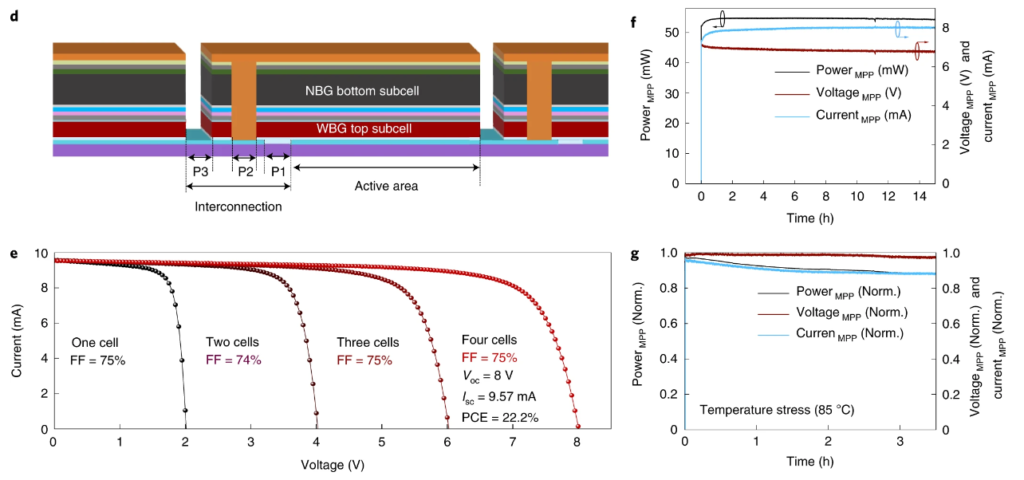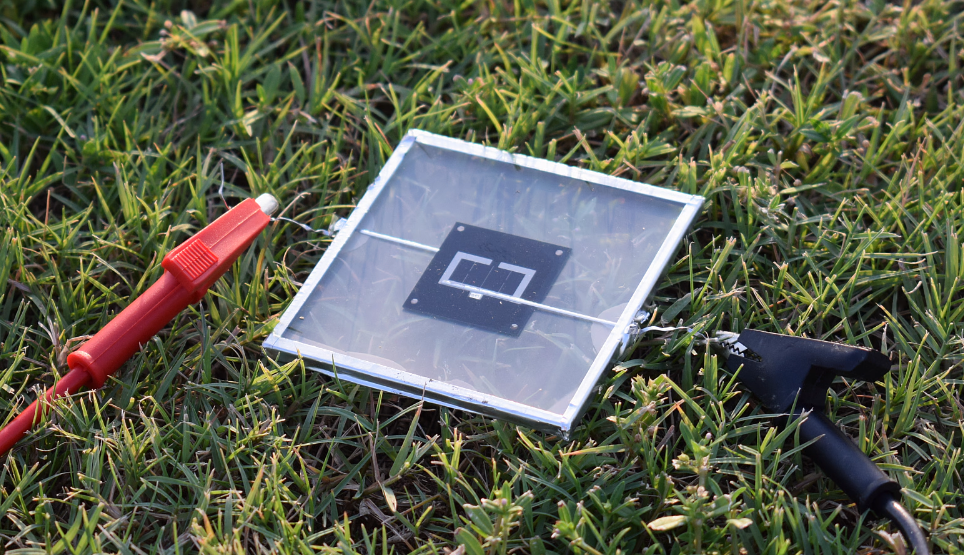Karlsruhe Institute of Technology (KIT) researchers have created a prototype for completely scalable all-perovskite tandem solar panels. With an aperture area of 12.25 square centimeters, these modules offer an efficiency of up to 19.1 percent.

This discovery, the first of its kind recorded anywhere in the world, was made feasible by increasing efficiency through improved light routes, high-throughput laser scribing, and the utilization of proven industrial coating processes.
Tandem solar cells create more power and employ a larger spectrum, making them more efficient. Perovskite solar cells with configurable band gaps are attractive tandem partners for both other-material solar cells and all-perovskite tandem solar cells.

This astounding outcome is the consequence of three crucial advances. The KIT researchers improved the efficiency of the perovskite solar cell design by optimizing the light route and eliminating reflections. They used high-throughput laser scribing to design an efficient layout for tandem solar modules, allowing the fabrication of functioning tandem solar mini-modules with two-terminal linked cell strips. Finally, they employed well-established industrial coating procedures (blade coating and vacuum deposition).

This result will serve as impetus for future research in academia and industry to commercialize the innovative and sustainable technology of all-perovskite tandem solar modules through scaling and stability enhancements.
Reference- Journal Nature Energy, Karlsruhe Institute of Technology (KIT) Media Outreach, Futurism, CLean Technica






